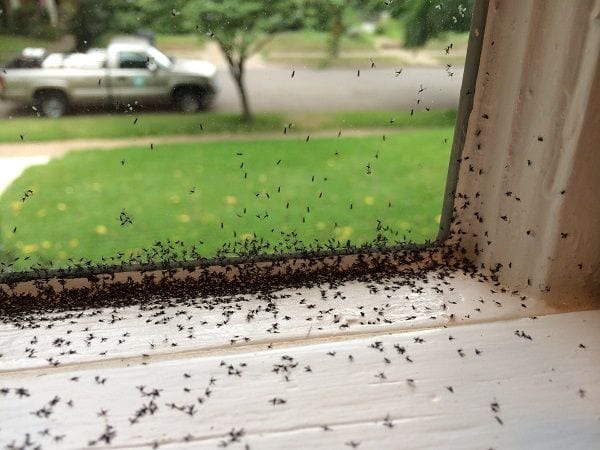After working hard on your indoor plants and garden, losing them to a fungus gnat invasion is frustrating. While these insects are tiny and seemingly harmless, they can kill your plants and also become a nuisance in your home. Preventing and managing fungus gnats can prevent an infestation in your home from becoming critical.
Identifying Fungus Gnats
Fungus gnats are tiny insects that invade homes. They look like fruit flies but are darker in color. Adults are around 1/8- inch long, with long legs and thin antennae and look like tiny mosquitoes.
They hang around household drains, wet sewers, and in indoor plant pots, instead of fruit. Fungus gnats primarily attack houseplants because of the moisture inside the pots. They also fly close to your face, which makes them annoying.
Why Do Fungus Gnats Attack Plants?
Adults lay their eggs on the organic matter on the soil surface. After three days, the eggs hatch into larvae that sinks into the soil to feed on decaying plant material. Usually, adult gnats live for around one week. If they laid the eggs in your house, the problem persists. Adult fungus gnats emerge from the soil after two weeks and also lay eggs. The cycle continues.
Fortunately, fungus gnats are harmless to humans. They do not bite or spread infectious diseases. Instead, they harm your plants. When the larvae sink into the soil to find food, they feed on your plant roots.
You will notice your plants withering and the leaves yellowing. The larvae can also drill into the stems of plants, which is devastating for seedling and small plants. Without roots, your plants may eventually die.
While larvae affect most plants, adult fungus gnats cause damage by infecting the soil with fungi. Damping-off is a common problem that affects seedlings. When the soil is infected with fungi such as Phytophthora and Pythium, the seedlings bend along the line of contact between the air and soil line.
How to Prevent a Fungus Gnats Infestation?
The best way to eliminate fungus gnats is to prevent moisture buildup around your plants. You can dump a thin layer of sand on your soil to absorb the moisture. You can also use small jars half-way filled with vinegar and make some holes on the lids to trap the insects. For the larvae, hydrogen peroxide mixtures, chamomile tea, and cinnamon are popular home remedies. However, for a wide-spread infestation, it’s best to consult a professional.
Need Assistance with Pest Control?
Preventing fungus gnat infestations is the best way to protect your plants. For more information on fungus gnats control, contact SafeHaven Pest Control.
Fungus Gnats FAQs
1. What are fungus gnats and how do I identify them?
Fungus gnats are tiny, dark-colored insects that look like small mosquitoes or fruit flies. Adults are about 1/8 inch long with long legs and thin antennae, and they are commonly found around indoor plants, drains, or wet soil.
2. Why do fungus gnats attack my plants?
Adult fungus gnats lay eggs on soil surfaces, and the hatched larvae feed on decaying organic matter and plant roots. This can cause plants to wither, leaves to yellow, and seedlings to die if the infestation continues.
3. How can I prevent a fungus gnat infestation?
The best prevention is controlling moisture in your plant soil. Use a thin layer of sand to absorb excess water, avoid overwatering, and ensure proper drainage. Keeping your plant area clean also reduces the risk of gnats.
4. What are some home remedies for fungus gnats?
For minor infestations, you can trap adult gnats using jars with vinegar, or treat larvae with mixtures like hydrogen peroxide, chamomile tea, or cinnamon. These remedies help reduce larvae and limit the spread of fungus gnats.
5. When should I call a professional for fungus gnat control?
If the infestation is widespread and home remedies aren’t effective, it’s best to contact a professional pest control service. Experts can eliminate fungus gnats and protect your plants from further damage.
Other Common Pests:
WASPS ANTS SPIDERS SOW BUGS TERMITES




